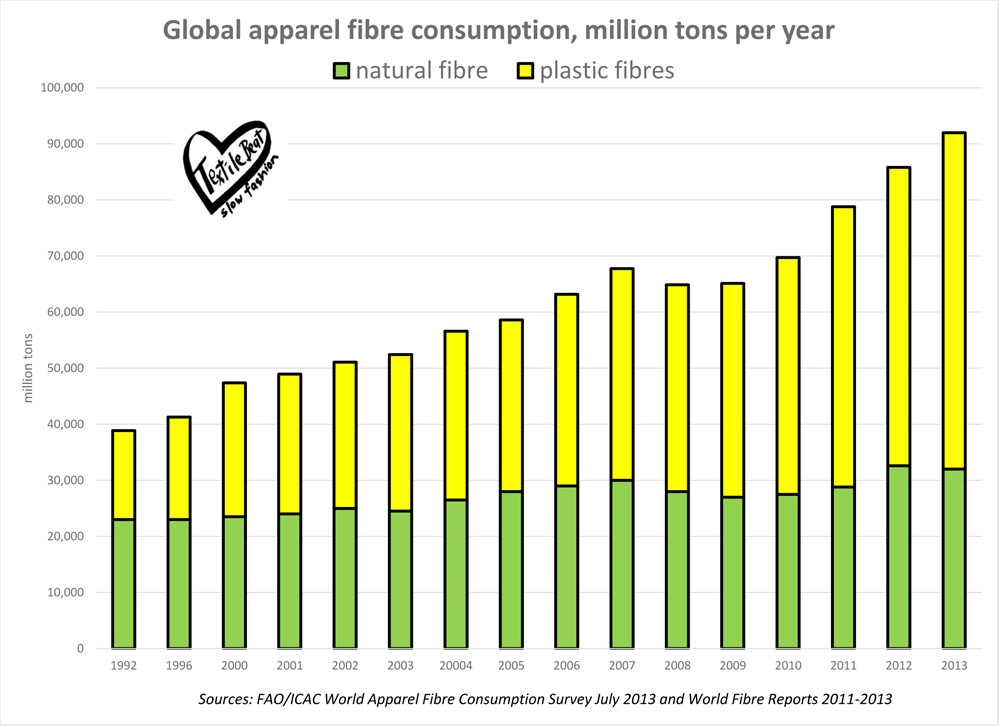Did you know that synthetic fibres derived from petroleum now dominate the clothing market at a time when research finds these plastic clothes each shed 1900 microplastic particles into the ecosystem with every wash?
The trend towards cheaper synthetic materials accelerated during the past two decades with biodegradable natural fibres making up half of global fibre apparel consumption in 1992 then declining to about one-third by 2013.
A troubling consequence of the rise of synthetics is 2011 shoreline research at 18 sites across the planet led by ecologist Dr Mark Browne which found the majority of accumulated plastic pollution was microplastic fibres that matched the materials found in synthetic clothing.
Clothing consumption figures collated from the Food and Agriculture Organisation and the World Fibre Report (see graph below) show in 1992 natural fibre consumption of 22 million tonnes from a global apparel fibre total of 39 million tonnes – compared with 2013 and 32 million tonnes of natural fibres from the global total consumption of 92 million tonnes. These figures reflect in increasingly bulging wardrobes, with average individual consumption rising from 7kg/person in 1992 compared with 13kg/person in 2013.
